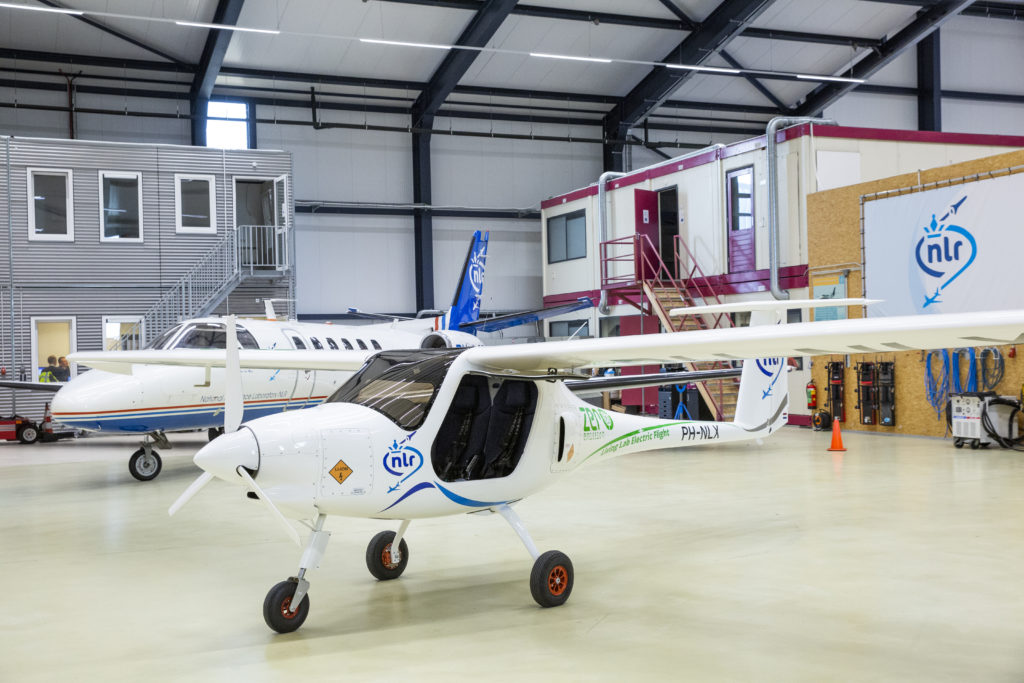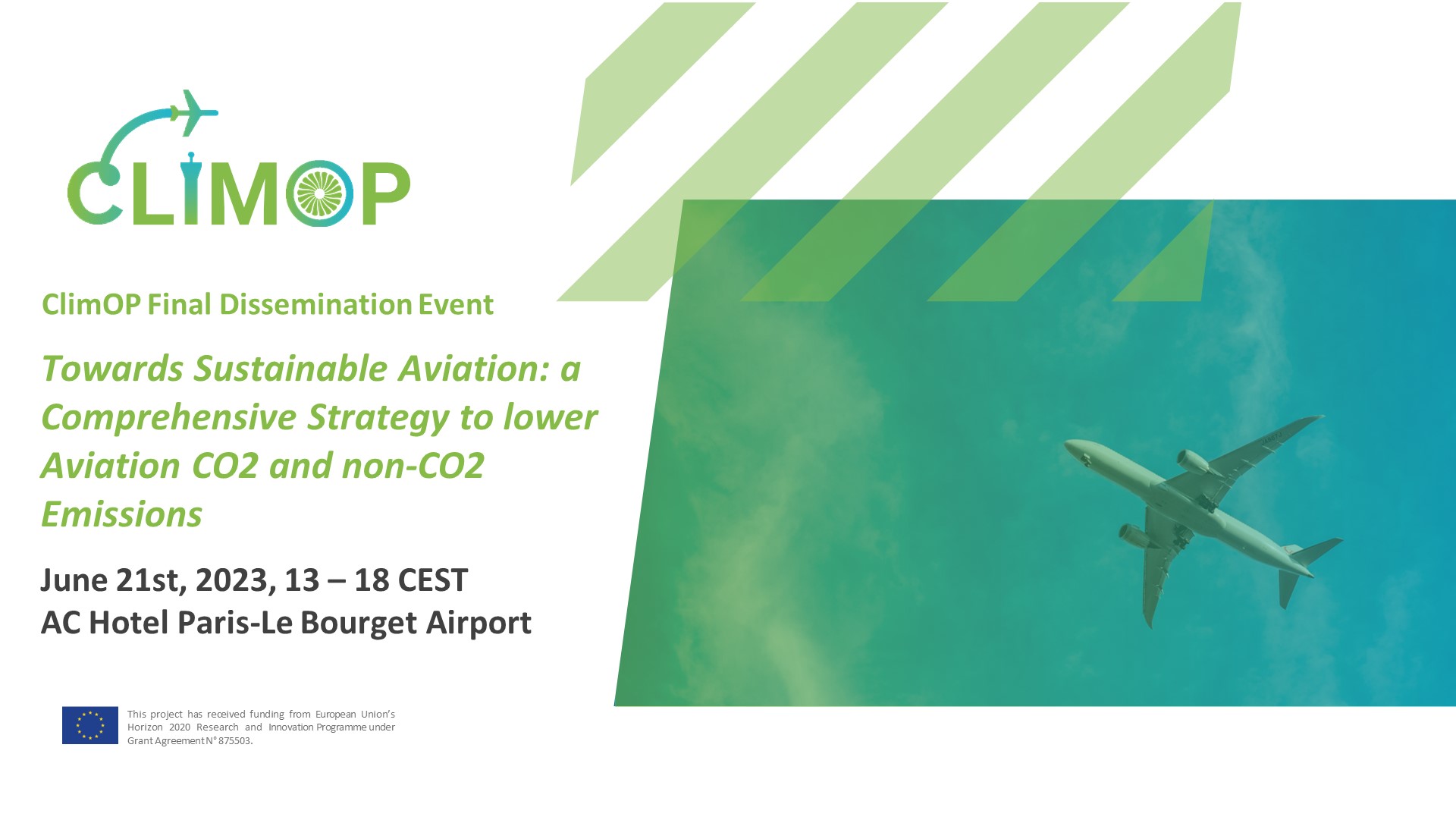NLR is the Royal Netherlands Aerospace Centre, a leading international research centre for aerospace, joined ClimOP to develop a greener aviation. Bolstered by its multidisciplinary expertise and unrivalled research facilities, NLR provides innovative and integral solutions for the complex challenges in the aerospace sector. This expertise covers innovation in aerospace vehicles, aerospace systems and aerospace operations.
Our partner’s activities span the full spectrum of Research Development Test & Evaluation (RDT & E). Given NLR’s specialist knowledge and facilities, companies turn to NLR for validation, verification, qualification, simulation and evaluation. NLR thereby bridges the gap between research and practical applications, while working for both government and industry at home and abroad.
NLR stands for practical and innovative solutions, technical expertise and a long-term design vision. This allows NLR’s cutting edge technology to find its way into successful aerospace programs of OEMs, including Airbus, Embraer and Pilatus. NLR contributes to (military) programs, such as ESA’s IXV re-entry vehicle, the F-35, the Apache helicopter, and European programs, including SESAR 2020 and Clean Sky 2.
Environmental services
This ClimOP’s member is a major European aeronautical research centre with a specialisation in Air Transport R&D. This includes environmental issues as emissions, noise and third party risk, in which areas it exploits validated computer models. NLR carried out many projects for a more sustainable aviation. Some of the work enabled monitoring the actual levels of noise, emissions and third party risk around airports.
The NLR also supports and carries out these activities with numerical models and tools such as LEAS-iT¹, AERO-MS, and state of the art facilities, such as the Virtual Community Noise Simulator (VCNS) and the recently revealed electrical aircraft the Pipistrel Velis Electro.

Figure 1. The Pipistrel Velis Electro, the electrical aircraft of NLR.
Environment and Policy Support
The department of Environment and Policy Support specialises its research and development and consultancy on the following areas:
- Noise modelling and impact analyses for various European airports (INM, TUNA , ENVIRA models):
- Calculation and optimization of noise contours and levels
- Environmental Impact Reports
- Recommendations for noise mitigation strategies
- Quality of Life assessments:
- Investigating the impact of the aviation industry on quality of life (QoL). This implies better understanding of aspects of QoL such as the living environment including noise exposure and local air quality. Health, such as long term effects of noise exposure and sleep disturbance. Or whether people trust the government and have the opportunity to participate in community engagement.
- Local emission modelling and impact analysis (LEAS-iT model):
- Calculation of LAQ at airports
- Environmental Impact Reports
- Optimising LAQ through research to reduced emissions in TMA (through operational improvements such as efficient taxiing, CCO/CDO operations, etc)
- Evaluation of emissions, noise, third party risk and interdependencies for policy- and decision-makers at airports, regulators, ANSPs, airlines, industry and consultants.
- Global emission modelling and analysis for a greener aviation:
- Calculation of aircraft emissions under various scenarios
- Assessing the optimisation of aircraft emissions through technical, operational and policy options, including cost benefit analysis.
- Assessing climate impact of aviation under various scenarios
- Research and developments of sustainable aviation concepts, such as:
- Alternative propulsion concepts and alternative fuels
- Sustainable and green airports
- Operational improvements and policy to reduce climate impact (both in terms of CO2 and non-CO2).
- Evaluation of environmentally friendly flight procedures (arrival and departure).
Specific contribution of NLR to the ClimOP consortium
Within ClimOP, NLR leads the design and selection of mitigation strategies. To implement operational improvements and reduce the climate impact of aviation, the consortium planned a cost/benefit analysis, scenario analysis and stakeholder analysis. The goal is the development of mitigation strategies that will consist of different policies.
NLR builds bridges across the individual Operational Improvements and fosters implementation. In this process, NLR investigates the stakeholders’ interests and potential responses to the suggested OIs. In support of the introduction of the most effective proposed OI, NLR designs, models and tests supporting policies.
This selection constitutes a delicate stakeholder analysis and potential responses and assessment of policies and regulations to effectively implement the Operational Improvements selected in the ClimOP project.
To ensure harmonized strategies and optimal effectiveness of the mitigation strategies, the design and selection takes into account various characteristics of the OI’s to be implemented, such as maturity levels and key performance indicators. Also characteristics of the Regulations and Policies that will foster the implementation are considered, such as enablers and show-stoppers.
Lastly, characteristics of the stakeholders involved with and affected by the OI’s and Regulations and Policies are considered, such as their interest in an OI or capability to implement the Regulations and Policies. These are just a few of the numerous variables that will be included in the analysis ClimOP to foster the greener aviation of tomorrow.
¹ A numerical model that calculates emissions on and around an airport




